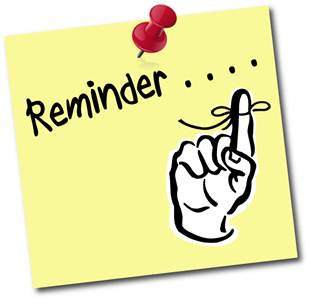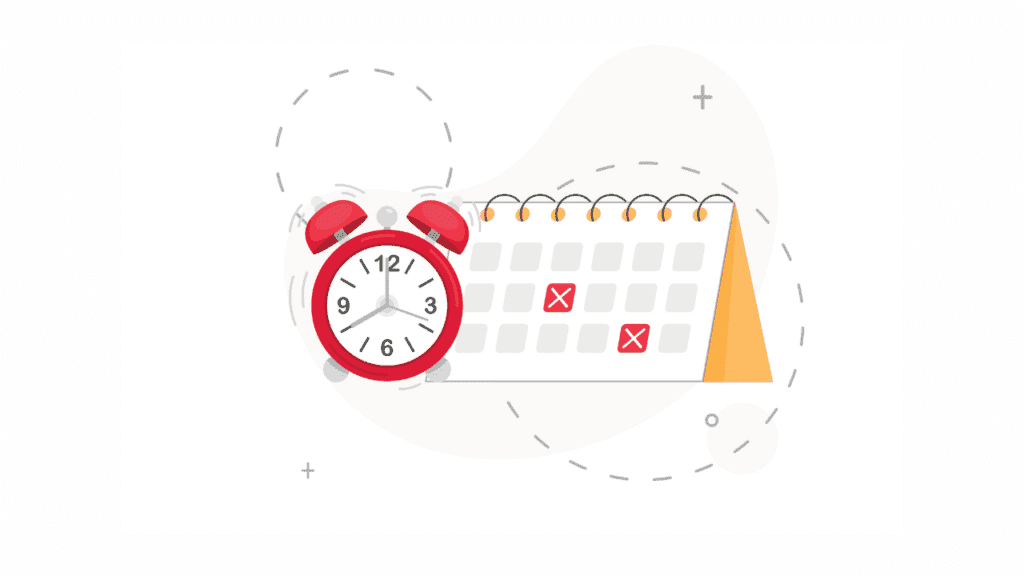Last updated on July 16th, 2021 at 10:36 am
 One of the most overlooked (and underrated) activities in any dental office is contact and/or marketing to your patient base.
One of the most overlooked (and underrated) activities in any dental office is contact and/or marketing to your patient base.
We all hear about “patient retention” as a “hot button word” in the industry. But it really is as big of a deal as it’s made out to be. Actually bigger.
 So many doctors drive themselves crazy and drop all sorts of money on new patient marketing—in hopes of improving production. Meanwhile half of their existing patients don’t show up for recall appointments, cancellations are rampant and “inactive” patients outpace “active” ones by a wide margin. Usually there’s enough outstanding treatment in those charts to keep the office bustling if only these patients would come back or show up regularly! Now, this isn’t to say you shouldn’t market for new patients. You should. But you should place the same emphasis on marketing to your existing base. After all, most of the business world does…
So many doctors drive themselves crazy and drop all sorts of money on new patient marketing—in hopes of improving production. Meanwhile half of their existing patients don’t show up for recall appointments, cancellations are rampant and “inactive” patients outpace “active” ones by a wide margin. Usually there’s enough outstanding treatment in those charts to keep the office bustling if only these patients would come back or show up regularly! Now, this isn’t to say you shouldn’t market for new patients. You should. But you should place the same emphasis on marketing to your existing base. After all, most of the business world does…
So, with that said, how do you put the appropriate focus on retaining these patients?
Given that most people don’t really want to go to the dentist and will try their darndest to put it out of their mind, it’s important to build a good relationship with patients and stay in their mind continuously.
You do this by reaching out to them on a regular basis. You keep reminding them.
We’ve covered the basics of patient outreach in this post Internal Marketing Must-Do’s by MGE Senior Consultant Dania Williams.
In this article, I wanted to write about one of the cheapest and easiest ways to reach out to your patients: email.
It doesn’t cost you anything to collect all the email addresses of your patients, and it doesn’t cost anything to send an email.
The only expense here is the negligible monthly fees of an email service like mailchimp.com, constantcontact.com or aweber.com, which will manage your list of email addresses, provide pretty templates for your emails, and send the email blasts. They make it pretty easy. It also helps to manage permissions—i.e. you want people on your email list who agree to be on your email list. You also want it to be easy to unsubscribe. These sites do this for the most part.
Some ideas to follow as you go about any email campaign:
Collect email addresses from every patient. Every new patient should provide their email address on their paperwork. Don’t make a stink about it if they really don’t want to give their email address, but most people will. If there are existing patients that you don’t already have an email address for, collect those whenever they are scheduled for an appointment. These email addresses are then added to the list on your email service (mailchimp, aweber, constantcontact, etc.)
DON’T remove email addresses of inactive patients who haven’t been in for a while. That’s the beauty of email marketing—it’s free to keep emailing somebody. So if they haven’t been in the practice for year, that’s fine! Keep emailing them. You’d be surprised by how many patients haven’t been in for 3, 4 or even 5+ years but still think of your as “my dentist.” There’s no upset, they don’t hate you. They just kept putting off their dental visit. So keep reaching out to them and get them back into the office. They probably need some work done after all this time.
DON’T be “spam.” Spam is a slang word for unwanted advertising emails. It’s the digital equivalent of junk mail. We’ve all gotten spam emails at some point in the past. Discounts on Viagra or scam emails from some person overseas who needs your bank account and social security number so he can transfer you money. Ugh. We hate getting these emails because we didn’t ask for them and don’t want them. Your patients hate spam, too. So make sure when you are creating emails, you ask yourself, “is this something that would actually interest or benefit a patient?” This also means you shouldn’t buy email lists from other companies and start sending email blasts to them without the permission of the recipient. To avoid becoming spam, here’s a few suggestions:
DO remove patients who have asked not to receive emails. As I mentioned earlier, all major email services (mailchimp, constantcontact, etc) have a little option at the bottom of all emails to “unsubscribe.” This makes it easy for someone who doesn’t want to receive your emails anymore to “unsubscribe” from your list, and the email service will automatically take them off the list. If someone doesn’t want to be emailed, don’t email them. There’s no benefit to emailing people who have asked not to be emailed. It just upsets them and turns them away from your practice.
Email regularly, but not too regularly. You’ve got to walk a fine line here. You need to keep reminding the patient so they don’t forget about you in the six months between appointments…but you also don’t want annoy the patient to nagging them continually. I would limit it to 1-2 emails per month. Emailing every single week would be too much. Nobody wants to hear about teeth that often. Emailing less than once per month would be too little, though.
Pay attention to the “From Name.” When an email arrives in your inbox, you can see the subject line and who it’s from. This name of the sender is actually the biggest factor in whether or not someone opens the email. The truth is, not everybody is going to open the email you send them. In fact, if over 20% of the email recipients open your email, then you’re doing better than most. That means 80% or more never see or read your email. So anything you can do to increase the number of people who open your email is valuable.
Email services allow you to customize the “From Name.” In most cases, it’s best to use the doctor’s name, as patients tend to connect to the doctor more so than the name of the practice. The email will appear as coming from, “Dr. Johnson” or “Dr. Shelly Johnson.” Although, if there is someone in the office that all the patients know and like, such as the front desk person, hygienist, scheduler or office manager, you have the option of using their name, along with the name of the practice. Then the email would come from “Janet, Family Dental Center.”
Use a good Subject Line to entice recipients to open the email. The second biggest factor in whether or not someone opens an email is the subject line. So put a little thought into it before sending. There are a few general guidelines that can help:
Keep it short. Ten words or less is ideal. The longer the subject line gets after that ten word mark, the less effective it becomes.
Don’t yell. Using all capital letters or using exclamation marks (!) will make less people open the email. In fact, the friendlier and more polite the better. Words like “thank you, “please” and “sorry” increase opens. People don’t like their email inbox giving them orders or yelling at them.
Show them value. One way to encourage people to open your email is to show that there is some benefit to them reading it. You can answer an interesting question, provide valuable information (“How to…” is usually a good start for an informational or instructional type email) or give them something they want (whitening, discount, etc.).
Create a mystery. A mystery can be like that itch that you just have to scratch. See if you can create a subject line that poses a question or leads someone on in a way that they just have to find out the dang answer to. Things like “5 symptoms of gum disease you should never ignore,” or “Read this before you brush your teeth tonight,” You can even just do a subject line that’s so short and mysterious that people get curious as to what this email is about.
Use numbers. Being very specific piques people’s curiosity even more. “3 ways you’re flossing wrong” is more interesting that “This is how you’re flossing wrong.”
Personalize it. The more it seems like the email was written just for the recipient, the better. When people see their own name there is a mental effect to it, and it creates a stronger response. With most email services, it is possible to customize the headline so each person see’s their own name in it. Otherwise, having a casual subject line that seems like something a friend would send is good.
 Include a “call-to-action” in every email. The whole point of sending out these emails is to get patients into the practice, right? Well then, make sure each email has a “call-to-action”—which is a marketing term meaning a statement that tells a person to do something is a “call” to take an “action.” Often the call-to-action is based around a special offer: “Call today for a free Invisalign consultation!” “10% off veneers if you schedule your appointment before March 31st.” Or in the case of confirmation emails, the call-to-action would be to confirm their appointment. A recall or reactivation email would ask them to schedule a cleaning or checkup. One last piece of advice on creating a call-to-action or special offer is that “free” tends to get a better open rate and response than “discount,” “sale,” etc. It’s okay to offer a discount on a service like Invisalign, implants, etc., but I would also offer a free consultation or free exam and consultation for those things. After all, it’s worth your time, right? Speaking with someone who’s coming in specifically because they’re interested in a valuable procedure.
Include a “call-to-action” in every email. The whole point of sending out these emails is to get patients into the practice, right? Well then, make sure each email has a “call-to-action”—which is a marketing term meaning a statement that tells a person to do something is a “call” to take an “action.” Often the call-to-action is based around a special offer: “Call today for a free Invisalign consultation!” “10% off veneers if you schedule your appointment before March 31st.” Or in the case of confirmation emails, the call-to-action would be to confirm their appointment. A recall or reactivation email would ask them to schedule a cleaning or checkup. One last piece of advice on creating a call-to-action or special offer is that “free” tends to get a better open rate and response than “discount,” “sale,” etc. It’s okay to offer a discount on a service like Invisalign, implants, etc., but I would also offer a free consultation or free exam and consultation for those things. After all, it’s worth your time, right? Speaking with someone who’s coming in specifically because they’re interested in a valuable procedure.
Alright, now those were the general rules for email marketing. Now we answer the question of WHAT do you email your patients.
Here are nine different types of emails you can send to your patient base.
Email blasts to the entire list:
 1. Newsletters. You should have a newsletter that goes out via hard mail and email at least once a quarter (preferably once a month). Each newsletter would contain the following
1. Newsletters. You should have a newsletter that goes out via hard mail and email at least once a quarter (preferably once a month). Each newsletter would contain the following
- Patient education based around a theme. Each newsletter can focus on different service, which you would run a special offer on for the duration of that month. Implants, veneers, whitening, Invisalign, gum disease, children’s oral health…these are all good subjects for newsletters.
- News & announcements about the practice. Here is where you can feature goings-on about the practice. Community work, events, new staff or associate, babies born, etc., can all be included here to make the office more personal.
- Call to action. (This would be related to the subject of the newsletter.)
- Anything else interesting you’d like to include. You could have a preventative care column from the hygienist, request for referrals, interesting tidbits or dental humor.
2. Articles from your blog. If you have a blog on your website, you can post interesting articles on it periodically and email these to your patients. Make sure each email has a link to your blog and a call-to-action.
3. Special offers. Simple as it gets. You can always just send an email letting your patients know that you’re currently running a special on whitenings, implants, dentures, etc. And of course there’s back-to-school specials, holiday specials, etc. You definitely don’t want to over-do it with these special offer emails, though, because that’s where you start to look like spam.
4. Important announcements. You should certainly email your patients when you have an important announcement regarding the practice, such as a location change, new doctor, etc.) And of course, a “use up your insurance before the year ends” email.
Emails sent on an individual basis:
 5. Appointment reminders & confirmations. There are plenty of practice management and marketing software services that will send confirmation emails and/or texts automatically. If you’d like recommendations for when and how often you should send reminders/confirmations, email me at adamm@mgoenline.com and I’ll send you a sample confirmation policy that you can customize to your office.
5. Appointment reminders & confirmations. There are plenty of practice management and marketing software services that will send confirmation emails and/or texts automatically. If you’d like recommendations for when and how often you should send reminders/confirmations, email me at adamm@mgoenline.com and I’ll send you a sample confirmation policy that you can customize to your office.
6. Patient reactivation. Email is a part of the Reactivation Program we offer here at MGE. If you’d like a copy of it for free, email me at adamm@mgeonline.com. It’s been proven to get old inactive patients back in the chair.
7. Birthdays. Sending a Happy Birthday is just a nice thing you can do and a good excuse to reach out to the patient.
8. Follow up emails. appointment reminder software or companies allow you to automatically send follow up emails to patients after they’ve completed their appointment, but you could also send them manually. This is to:
- Thank them for their visit.
- Ask for feedback.
- Ask them to leave an online review . (Go ahead a put a link in the email right to your Google page and Yelp page, so all they have to do is click the link and type their review.)
- Ask for referrals, offering a special discount or free first visit for any friends or family they send into the office.
And that’s it. I hope this helps you bring in more patients and get production going! If you have any questions, feel free to contact me at adamm@mgeonline.com


No Comments
Be the first to start a conversation